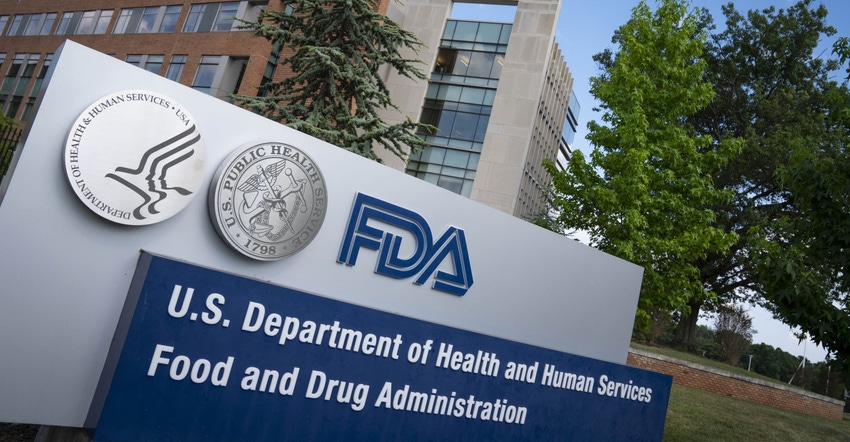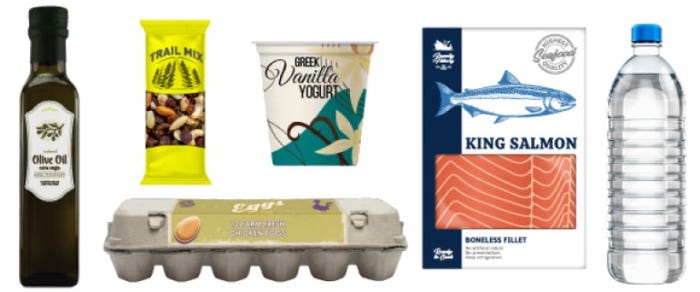Industry says FDA proposal is step in the right direction, but more can be improved upon in making healthy label.

The Food and Drug Administration has begun a public process to update the "healthy" claim for food labeling to be consistent with current nutrition science and federal dietary guidance. Claims like “healthy” on food labels can provide information to consumers to help them identify healthier food choices at a quick glance. However, foods must meet specific nutrient-related criteria to use the nutrient content claim “healthy.”
On September 28, 2022, the FDA issued a proposed rule to update the definition of the nutrient content claim “healthy,” which was set in 1994. The existing definition has limits for total fat, saturated fat, cholesterol and sodium and to qualify, foods must also provide at least 10% of the Daily Value for one or more of the following nutrients: vitamin A, vitamin C, calcium, iron, protein and fiber.
The FDA also is conducting research on a symbol to represent the claim “healthy.” The claim, along with a potential symbol on the front of a package, would act as a quick signal to empower consumers with information to identify foods that will help them build healthy dietary patterns.
Under the proposed definition, raw whole fruits and vegetables would automatically qualify for the “healthy” claim because of their nutrient profile and positive contribution to an overall healthy diet. Examples of foods currently ineligible to bear the “healthy” claim based on the existing regulatory definition, but that would qualify under the proposed definition are water, avocados, nuts and seeds, higher fat fish, such as salmon, and certain oils. Products that currently qualify for “healthy” that would not under the proposed definition include white bread, highly sweetened yogurt and highly sweetened cereal. And plain, non-carbonated water and plain, carbonated water could be labeled “healthy” as well. Under the current regulation, water cannot be labeled “healthy.”

FDA notes updating the “healthy” definition could lead to more healthy foods in the marketplace if some manufacturers choose to reformulate or produce products that meet the new definition.
The old FDA policy, which is still in effect until this rule takes effect, did not include dairy under its healthy claims; the new proposed rule released does, but could still have further opportunity to encourage the wider adoption of dairy products as “healthy” food, according to the International Dairy Foods Association.
Joseph Scimeca, PhD, IDFA senior vice president of regulatory and scientific affairs, says as 90% of Americans do not consume enough dairy to meet daily nutritional requirements set in the most recent dietary guidelines, the proposed rule “must clearly establish criteria for dairy products that encourage the consumption of dairy foods while also helping consumers select the options that meet their health, taste, and lifestyle needs. While the proposed rule takes some positive steps toward encouraging consumption of dairy products to help Americans meet the recommendations of the 2020-2025 DGAs, it falls short in many other important areas by limiting how dairy labels communicate the full nutritional benefits of dairy to consumers.”
The proposed rule does include dairy as a recommended food group consistent with the DGAs and sets criteria that a ‘healthy’ claim on dairy must also meet limits for saturated fats, sodium, and added sugars. In fact, the proposed rule sets criteria to require a product to contain the equivalent of at least a ¾ cup serving of dairy product to bear a ‘healthy’ claim, a positive step toward encouraging consumption of dairy.
Scimeca says, however, the rule ignores nutrition and dietary science demonstrating that dairy is a crucial part of a healthy diet beginning at a very young age. In fact, no other type of food or beverage provides the unique combination of 13 essential nutrients that milk and dairy contribute to the American diet, including high quality protein, calcium, vitamin D, and potassium, along with the health benefits including better bone health and lower risk for type 2 diabetes and cardiovascular disease, IDFA explains.
“Furthermore, the proposed rule ignores a fundamental tenant of nutrition guidance: A food must be consumed in order for it to have any nutritional and health benefit. Restricting or limiting dairy foods—which are severely under consumed according to the federal government’s own DGAs and widely known to be nutritionally dense—flies in the face of science,” he adds.
Milkfat is a major point of contention within the dairy industry. Although the rule sets no limit on total fats, aligning with IDFA’s view, it prohibits many nutritious products from carrying a “healthy” claim. The proposed rule sets a requirement for dairy products to contain no more than 10% Daily Value of saturated fat per Reference Amount Customarily Consumed. IDFA encourages the FDA to revisit this portion of the rule to recognize the benefits of dairy at each fat level. Ignoring the benefits of milk fat will be a lost opportunity to embrace newer science and will contribute to ongoing confusion about the healthfulness of all dairy products.
IDFA believes that flavored milk should be less than 13 grams of added sugar per 8 fluid ounce serving, and flavored yogurt should be less than 23 grams of total sugar per 6 ounce serving. The proposed rule sets a limit of 5% DV of added sugar per RACC, which would be the equivalent of 2.5 grams of added sugar per serving.
“Moderate levels of added sugars in dairy products increase palatability, thereby encouraging Americans to consume these nutrient-dense foods. IDFA encourages the FDA to revisit this portion of the rule to recognize the benefits of moderate levels of added sugar to increase consumption of nutrient dense, healthy foods, including dairy,” IDFA explains.
Corn Refiners Association President and CEO John Bode says CRA is pleased to see FDA included added sugars as a nutrient of concern impacting the ability to use a ‘healthy’ claim in its proposed rule.
“Even though our industry is a major supplier of sugars, we do not encourage increased consumption as current nutrition research indicates a strong causal correlation with negative health outcomes. The scientific evidence and consumer expectations align: high-sugar foods should not be promoted as ‘healthy,’” Bode says.
The proposed rule did acknowledge the important functional and food safety uses of salt in cheese but kept the sodium limit for dairy at 10% DV, similar to other food categories. In keeping with IDFA’s past comments on sodium in foods, IDFA believes a ‘healthy’ claim should reflect an understanding that salt plays a crucial role in the manufacture and ripening of natural and processed cheeses and impacts overall product functionality, integrity, safety, and quality. IDFA encourages the FDA to revisit this portion of the rule to recognize that cheese is the second highest source of calcium yet contributes less than four percent of the sodium to the diet.
IDFA believes that use of the term healthy should be permitted, independent of the defined claim, as long as its use is truthful and not misleading and is in line with current dietary guidance, such as that found in the DGAs. The proposed rule agrees and clarifies that the criteria for the healthy claim would only apply when the word healthy is used as part of a nutritional context.”
Bode says they believe the FDA missed a powerful opportunity to empower American consumers by making its food labeling more transparent. While FDA pointed to “healthy” being conflated with non-nutrition factors in the proposed rule, they believe FDA can do more to educate consumers on what the term means.
In 2019, CRA submitted to FDA the results of a nationwide consumer perception survey conducted by Purdue University’s Jayson Lusk, Ph.D. The results of this survey found that respondents considered non-nutrition factors when assessing whether a product was “healthy,” including the use of hormones or antibiotics (23.5%), pesticide residues (18.4%), and the use of preservatives (15.9%).
“These findings highlight the lack of consumer awareness of, and consensus on, the definition of ‘healthy’ and the need for informative and accurate labeling,” Bode says. “As FDA considers public comments regarding its proposal, we urge FDA to better serve consumers and make the food industry more transparent by requiring that a brief explanatory statement, such as ‘based on nutrition content only,’ accompany ‘healthy’ claims. CRA plans to submit comments on the proposed rule reinforcing this position.”
About the Author(s)
You May Also Like




.png?width=300&auto=webp&quality=80&disable=upscale)
